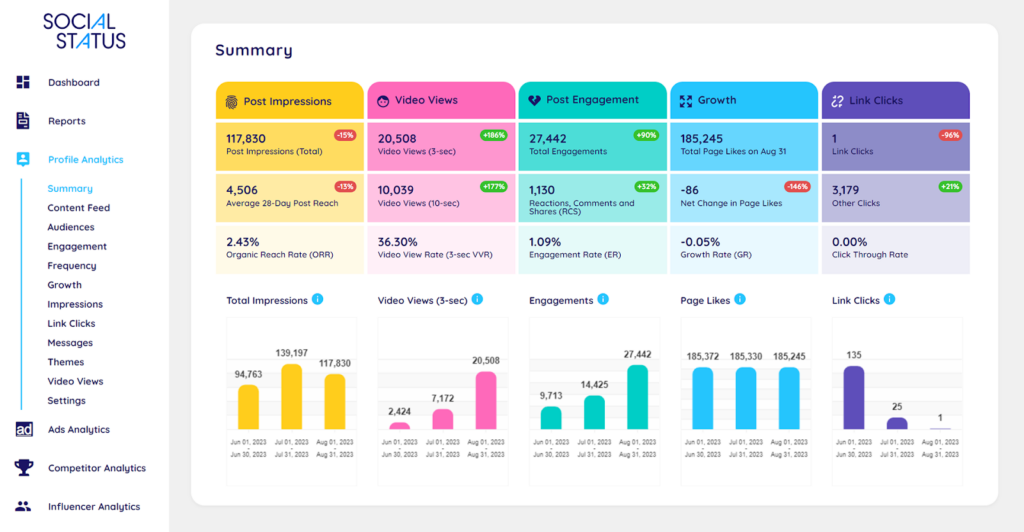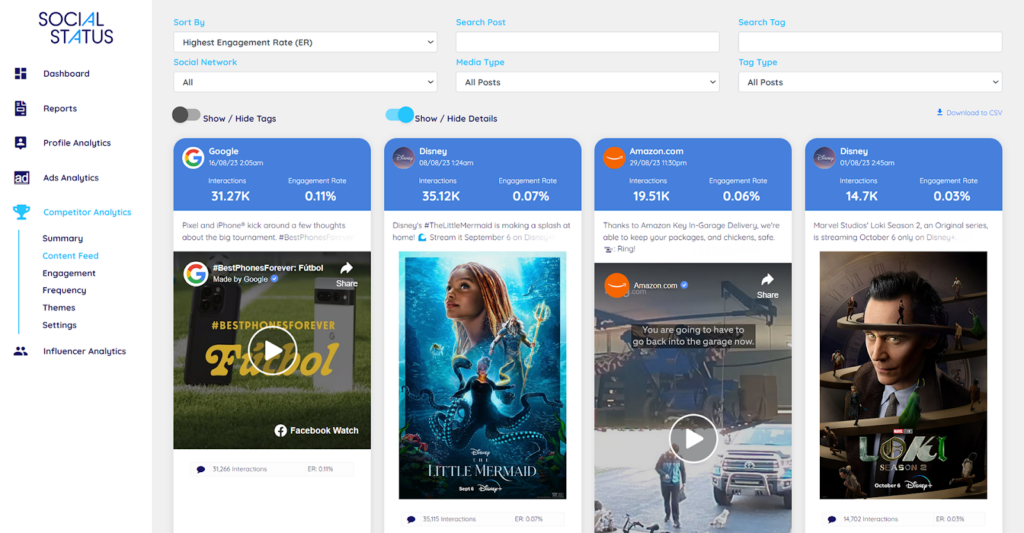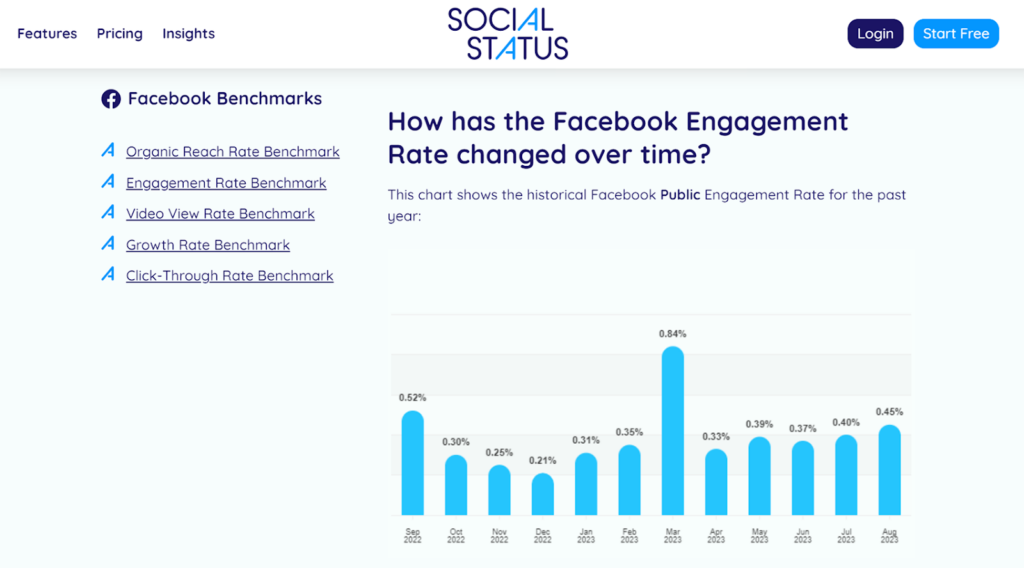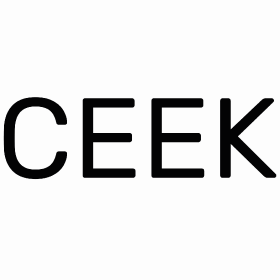Why You Should Benchmark Your Performance on Social Media
Social Media Benchmarking 101
Social media benchmarking puts context around your performance metrics. It is vital for two main reasons:
- Determines whether performance is increasing or decreasing over time
- Enables actionable insights for what to do next
Without performing social media benchmarking you have no way to gauge success on social media or even understand what represents “good” or “bad” performance.
There are two ways to benchmark your social media marketing:
- Historical benchmarking against yourself over time, i.e.: month on month, week on week
- Competitor benchmarking against a group of competitors that you determine
The Business Case for Social Media Benchmarking
Most stakeholders and clients lack a reliable framework for how to evaluate social media marketing (i.e.: what is the return on their investment?). Measuring interactions and growth is fine but without benchmarking, you’re measuring in a silo and unable to tell a coherent narrative of performance over time.
In addition to this, social media benchmarking strengthens the overall business case for social media marketing and may even help you change perceptions in your organization. Perhaps social is viewed internally as an expense but over time you can change that perception so that social is viewed instead as an investment that yields a tangible return.
Finally, social media benchmarking provides important competitor intelligence and helps you understand what kind of content works in your niche or industry. This isn’t about simply copying tactics that work for competitors but more about understanding how audiences react to different content, different media types and why. These kinds of insights can really help shape your future social media strategy and enable you to take a more data-led approach rather than one based on intuition and guesswork.
How to Do Historical Benchmarking?
Arguably the most popular social media metric that marketers care most about is Engagement Rate (ER). It’s not a perfect metric but ER is good for gauging the level of engagement across your posts on any social channel.
If your Facebook Engagement Rate is 1.09% (shown in the example below), how do you know if that’s good or bad? Month-on-month reporting can provide the necessary context and allow you to view the evolution of your metrics over time.

Figure 1: Historical social media benchmarking
Not only can you benchmark performance against yourself over time, but also cross-channel. For example, Facebook vs. Instagram vs. TikTok.
Another useful data source is broad benchmarks like the Facebook Engagement Rate Benchmark powered by the hundreds of thousands of profiles indexed daily by Social Status:
Like any benchmark, the monthly average moves constantly so it’s important to understand the broad trends at the channel level and how they may or may not impact your own performance. This is also super-useful for explaining performance changes to stakeholders or clients.
How to Do Competitor Benchmarking?
The second way to perform social media benchmarking is against competitors. Many marketers try to look for “industry averages” but benchmarks like these are always quite skewed and can be misleading.
Let’s say you run a small independent production studio. Does it make sense to benchmark yourself against the “Entertainment” industry benchmark which includes brands like Universal and Sony Pictures? Probably not. This is why it’s best to “roll your own” benchmark and define the competitors yourself. That way, your comparing apples with apples and getting a more accurate and relevant view of the prevailing average.
If you don’t know who your competitors are, it’s time to do some research! Look for brands and organizations that speak to the same kinds of target audiences that you do. It’s especially useful to identify competitors in your country or region since performance metrics are quite different globally due to how audiences behave and react on social media around the world.

Figure 3: Competitor social media benchmarking
When benchmarking against competitors, you can analyze individual post performance (like in the example above) or look at profile-level performance. Either way, you’ll ascertain a competitor’s average quickly. You can then use this to either prove how well you are performing vs. competitors or set a goal to increase performance to at least the competitor average.
Integrating Social Benchmarking as part of Reporting
Social media benchmarking isn’t just a one-off exercise. It should be used as a constant reference check as part of your ongoing weekly, monthly or quarterly social reporting.
Leaning on historical and competitor benchmarks provides stakeholders with the added context and removes any second guessing that might be incorrect.
When delivering your social media reports, you need to control the narrative and guide your stakeholders down pre-determined logical conclusions. Some of these might be the need to increase resources to create more high quality content or the need to adjust publishing frequency vs. content quality or the need to increase paid social spending.
All these conversations become easier and more data-driven if your social media reporting backs up your argument and states a strong business case.

























